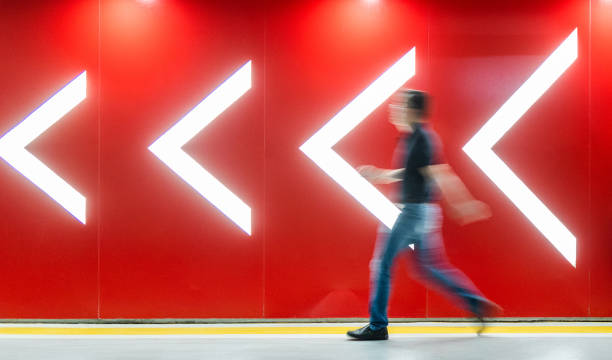
TL;DR:
- Urge incontinence, or overactive bladder, is often caused by nerve and muscle misfires, aging, brain or nerve conditions, infections, diet, hormonal changes, medications, weak muscles, and emotional stress.
- Symptoms include a sudden need to urinate, frequent urination, and inability to hold urine.
- Diagnosis includes a bladder diary, a medical exam, and urinalysis.
- Treatment options range from bladder training, Kegel exercises, and diet changes, to medical interventions like vaginal estrogen and nerve stimulation, and surgical procedures like sacral nerve modulation and bladder augmentation.
- Lifestyle adjustments include food and drink choices, regular hydration, weight loss, limiting smoking and constipation, and stress and emotion management.
- Identifying the type of incontinence (urge, stress or overflow) can lead to more effective treatment and often involves surgical solutions for better control over symptoms.
—
Have you ever experienced that sudden, uncontrollable need to rush to the bathroom? You’re not alone, and understanding the causes of this condition, known as urge incontinence, can be vital. At the Continence Center at Nevada Surgical, led by Dr. Kent Sasse, we delve into the various urge incontinence causes, from an overactive bladder to neurological disorders. Learn why these factors impact you and discover tailored solutions that could make a difference in your life. Read on and take the first step to regain control.
Understanding Urge Incontinence and Its Treatments
What Causes Urge Incontinence?
Urge incontinence, commonly known as an overactive bladder, occurs when the bladder signals the need to urinate even when it is not full. This is due to misfiring of the nerves and muscles in the bladder wall, causing unexpected bladder contractions and leaks.
***
Common Causes
- Aging: Changes in nerves and bladder muscles can contribute to urgency.
- Brain and Nerve Issues: Conditions like multiple sclerosis, Parkinson’s, or stroke may impact bladder control.
- Infections: UTIs can inflame the bladder, triggering spasms.
- Dietary Triggers: Caffeine, alcohol, and spicy foods can irritate the bladder.
- Hormonal Changes: Menopause can lead to muscle weakening and frequent urges.
- Medications: Some drugs can increase bladder activity, leading to incontinence.
Other Factors
- Weak Muscles: Aging or childbirth can weaken the pelvic floor, adding to leakage.
- Emotional Stress: Anxiety can aggravate bladder activity.
Diagnosing Urge Incontinence
Symptoms to Watch For
- Sudden need to urinate
- Frequent urination, especially at night
- Inability to hold urine long
When to See a Doctor
Visit a doctor if incontinence impacts your life quality. Early diagnosis helps in selecting the right treatment, potentially offering more relief than medications.
Diagnosis Tools
- Bladder Diary: Track timing and volume of urine and any leak incidents.
- Medical Exam: Check muscle strength and look for signs of infection or other issues.
- Urinalysis: Rules out infection as a cause of symptoms.
Treatment Options
Initial Approaches
- Bladder Training: Increases time between bathroom visits.
- Kegel Exercises: Strengthens pelvic muscles to reduce leaks.
- Diet Changes: Avoid foods that irritate the bladder.
Medical Treatments
- Vaginal Estrogen: For women who have postmenopausal symptoms.
- Nerve Stimulation: Uses mild electrical impulses to calm nerve signals.
Surgical Options
- Sacral Nerve Modulation: Implants that manage bladder control by sending pulses.
- Bladder Augmentation: Increases bladder size using tissue for severe cases.
Lifestyle Adjustments to Consider
Daily Habits
- Food and Drink Choices: Limit caffeine and other bladder irritants.
- Regular Hydration: Drink sufficient water to maintain lighter-colored urine.
- Weight Loss: Reduces pressure on the bladder.
- Limit Smoking and Constipation: Both can worsen urinary symptoms.
Stress and Emotion Management
Mindfulness, yoga, or therapy can alleviate stress, reducing bladder issues.
Identifying Types of Incontinence
Key Types
- Urge Incontinence: Sudden need to urinate.
- Stress Incontinence: Leaks during physical activities such as lifting or coughing.
- Overflow Incontinence: Bladder overfills, leading to dribbles.
Mixed Symptoms
It’s common to have more than one type. Identifying the main cause leads to more effective treatment, often using surgical solutions for long-term relief.
Understanding the type of incontinence ensures the best approach to relief and improved quality of life. Surgery remains an effective option when other treatments fall short, offering comprehensive control over symptoms.
##Conclusion
Understanding urge incontinence can change your life. We explored its main causes like overactive bladder and neurological disorders. We also discussed how to diagnose and treat it, covering everything from bladder diaries to surgical options. Remember, lifestyle changes can greatly help manage symptoms. These include avoiding bladder irritants and managing fluid intake. Different incontinence types need different treatments. If you’re struggling, consult a doctor. Taking these steps can help you regain control and improve your quality of life. Your health and comfort matter.
Are you struggling with urge incontinence and looking for effective treatments to improve your quality of life? Don’t let bladder issues hold you back any longer. Discover personalized solutions and regain control with the expert guidance of our specialists at [The Continence Center at Nevada Surgical](https://forms.aweber.com/form/55/310012255.htm). Contact us today to learn more about how we can help you find relief and restore your confidence!